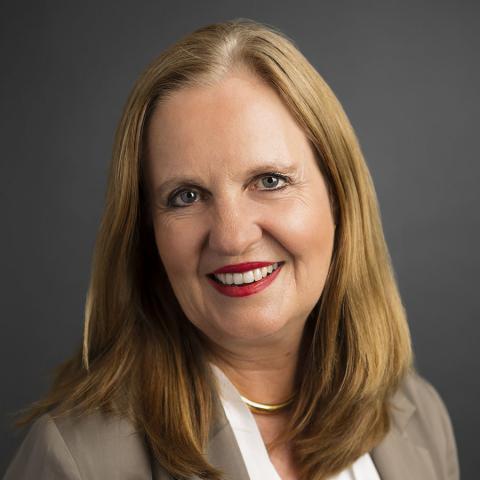Connectedness at DBS
In 2009 DBS was a traditional hierarchical bank. In order to create a new employee experience, DBS focused on building a culture of innovation and digital capabilities. Employees were invited to submit innovative solutions to reduce workplace “speedbumps” that hindered seamless customer experiences. Online platforms such as the “Ask Piyush” e-forum created a direct channel to senior management, allowing pain points to be raised directly with the CEO and either resolved quickly or addressed at regular Town Halls. This system and others like it connected employees across siloes, cut through hierarchies, dismantled layers of bureaucracy, and jumpstarted the digital workplace transformation.
We encourage people to speak up, to put their views on the table. We want people with the change agenda. This is a big shift in culture.
David Gledhill, Head of Group Technology and Operations
In 2011 Paul Cobban (Chief Operating Officer, Technology and Operations) led the redesign of an employee workspace. The new design deliberately pushed the boundaries of the physical environment with completely “hackable” open and flexible meeting and learning spaces and unbanklike décor. DBS creates new workspace designs as opportunities arise. The company’s human-centered design approach aims to hardwire new employee behaviors into the physical environment to send strong signals that collaboration and innovation are part of the company’s DNA.
If you design people spaces with behaviors in mind, you can make quite significant advances in your transformation program.
Paul Cobban, Chief Operating Officer, Technology and Operations
Integral to the open, flexible workspaces[foot]Employees had assigned neighborhoods. While some senior managers opted to retain an office in the new DBS workspace, many others joined their teams in flexible office spaces. The focus was on collaboration and learning to transform the culture for digital.[/foot] was the introduction of new workplace technologies, such as enterprise portals for sharing data, a unified communications infrastructure, telepresence conferencing systems, and social media platforms. DBS prioritizes getting great information into the hands of employees to give them a better experience with customers. Empowering employees in new ways has required a massive cultural shift. For example, customer center employees at DBS set up social media platforms (e.g., Facebook) to share ideas, collaborate across siloes, and enable self-organization. One of the most influential developments of these self-managed social platforms has been shift bidding (to replace the traditional top-down scheduling), with options to trade shifts, breaks, and leave.
The attrition rate in our call center is world class—absolutely rock bottom. It’s been a fabulous journey.
Paul Cobban, Chief Operating Officer, Technology and Operations
Increasingly, responses to making working life easier are achieved fully or in part with digital solutions that help employees resolve customer needs more seamlessly. Training in new ways of working is central to creating the building blocks for thinking digitally. From mobile app-delivered induction to digital ways of working, to face-toface training on how to lead a digital journey, everything is designed to be playful and fun. According to Paul Cobban, simplifying connection and building a common dialogue for challenging existing approaches to work “changes the minds of our people. Not only can they deliver better customer service, but they start to think, feel, [and] behave like a GANDALF company.”[foot]GANDALF is an acronym for digitally born enterprises (Google, Apple, Netflix, DBS, Amazon, LinkedIn, and Facebook) whose business models are used as to illustrate the future for DBS. [/foot]
Responsive Leadership at DBS
An equally significant change in the digital transformation process was a new company approach to cultivating digital leadership among senior management.
The company established the Customer Experience Council, comprised of both business and IT executives and led by the CEO. Described by Paul Cobban as “the one place where various customer journey visions come together,” it is charged with developing and executing the bank’s vision and strategic direction and cultivating digital innovation throughout DBS.
The committee holds the leadership team of two hundred fifty general managers accountable for designing, implementing, and explicitly linking digital journeys that characterize employee and customer experiences.[foot]Currently DBS has three hundred digital journeys in play. While employee experience features in most customer-facing initiatives, just over a third of such initiatives are dedicated exclusively to improving the employee experience.[/foot] By focusing management on employee journeys, DBS has fundamentally altered the employee experience.
The overall experience of [employees] is made up of a number of journeys, whether it’s the onboarding experience, whether it’s the training experience, whether it’s the work experience, doing travel expenses, and getting approvals.
Paul Cobban, Chief Operating Officer, Technology and Operations
For example, one initiative aimed to empower employees to resolve some customer issues quickly in order to improve customer experience. One measure, customer hours, is used by DBS as a record of waiting time to evaluate customer experience. Senior management with customer service employees set a target to remove 10 million customer hours from the system. Employees were authorized to use up to $200 per customer to resolve situations immediately. Management then analyzed data from all transactions, leading to enhancements to employees’ resolution capabilities; and monitored employee performance for coaching and training purposes. Customer service employees shared their experiences and ideas on the enterprise social network and worked with management to further reduce customer hours. Employees and an in-house journalist published stories of experiences to foster further learning. The combined efforts from this initiative and others in the program surpassed the customer hours target and ultimately cut 250 million hours from the system.
DBS requires senior leadership to be more facilitative and less directive, more innovative, and less focused on control. The company enables this mind shift by encouraging leaders to take a hands-on role in digital innovation in DBS’s talent development program. For example, leaders conduct regular hackathons in which bankers team up with young coders for a week to embed digital thinking and skills through experiential learning.
We really think we have ignited a very magical spark that changes people’s thinking.
Neal Cross, Chief Innovation Officer
Your Most Important Challenge
The greatest challenge in many companies is cultivating a focus on reimagining the employee experience that permeates through the entire company. Our research has shown that high-performing companies like DBS are building business value through an iterative approach to designing and implementing the digital workplace, which requires investments in both leadership and connectedness.




